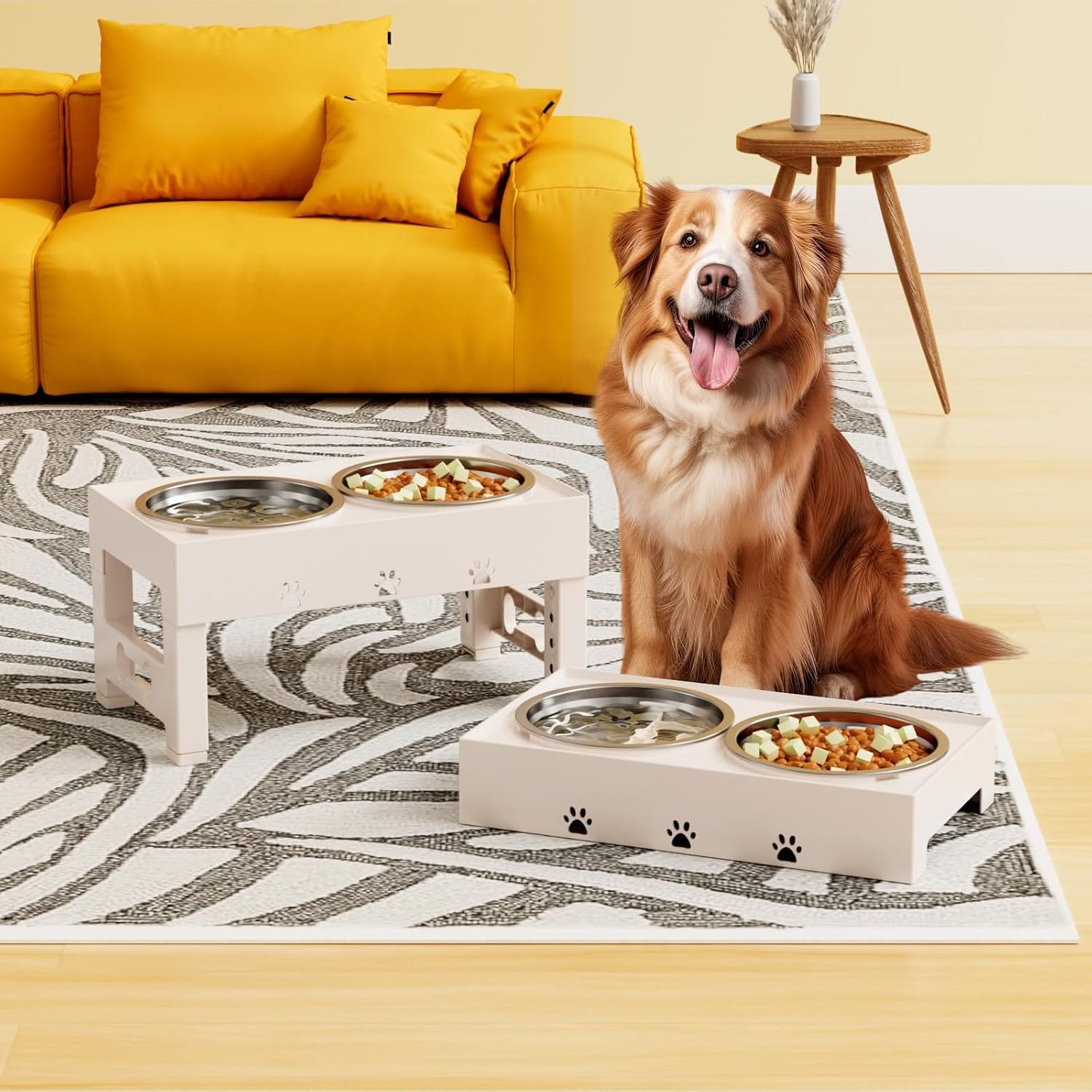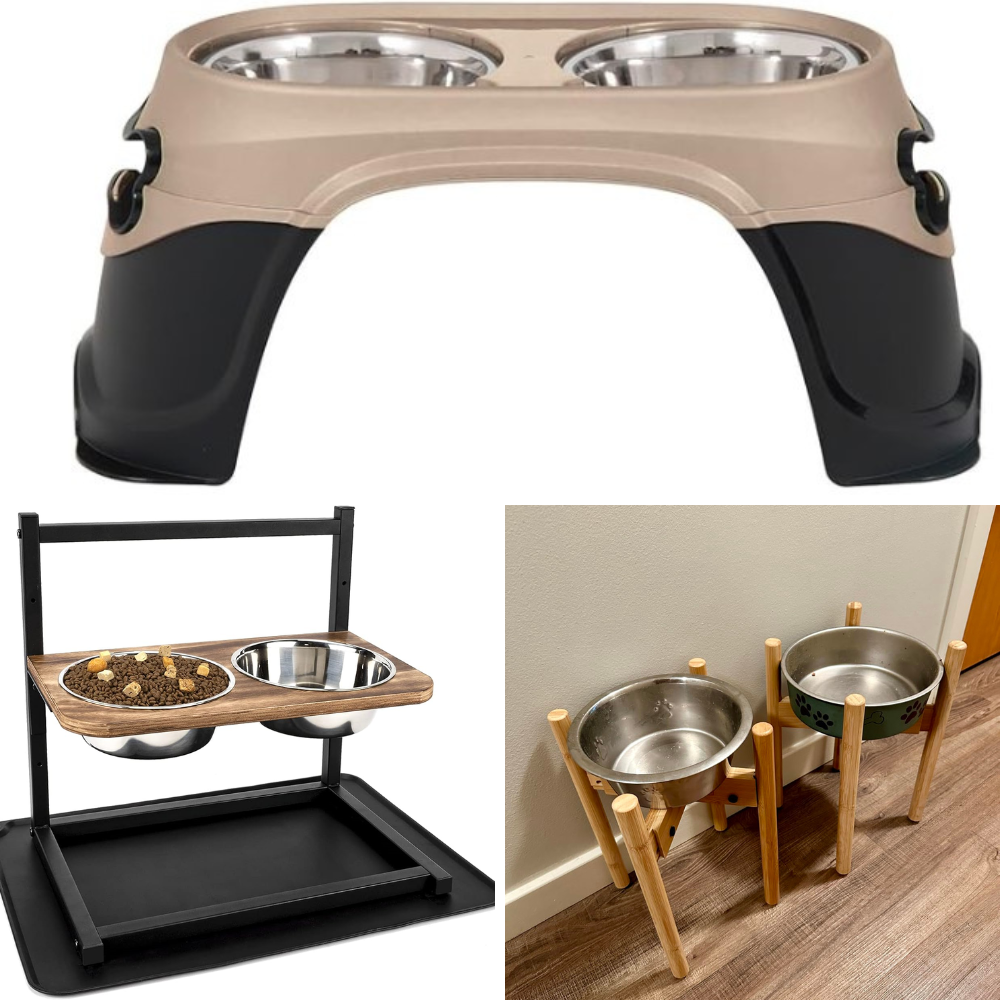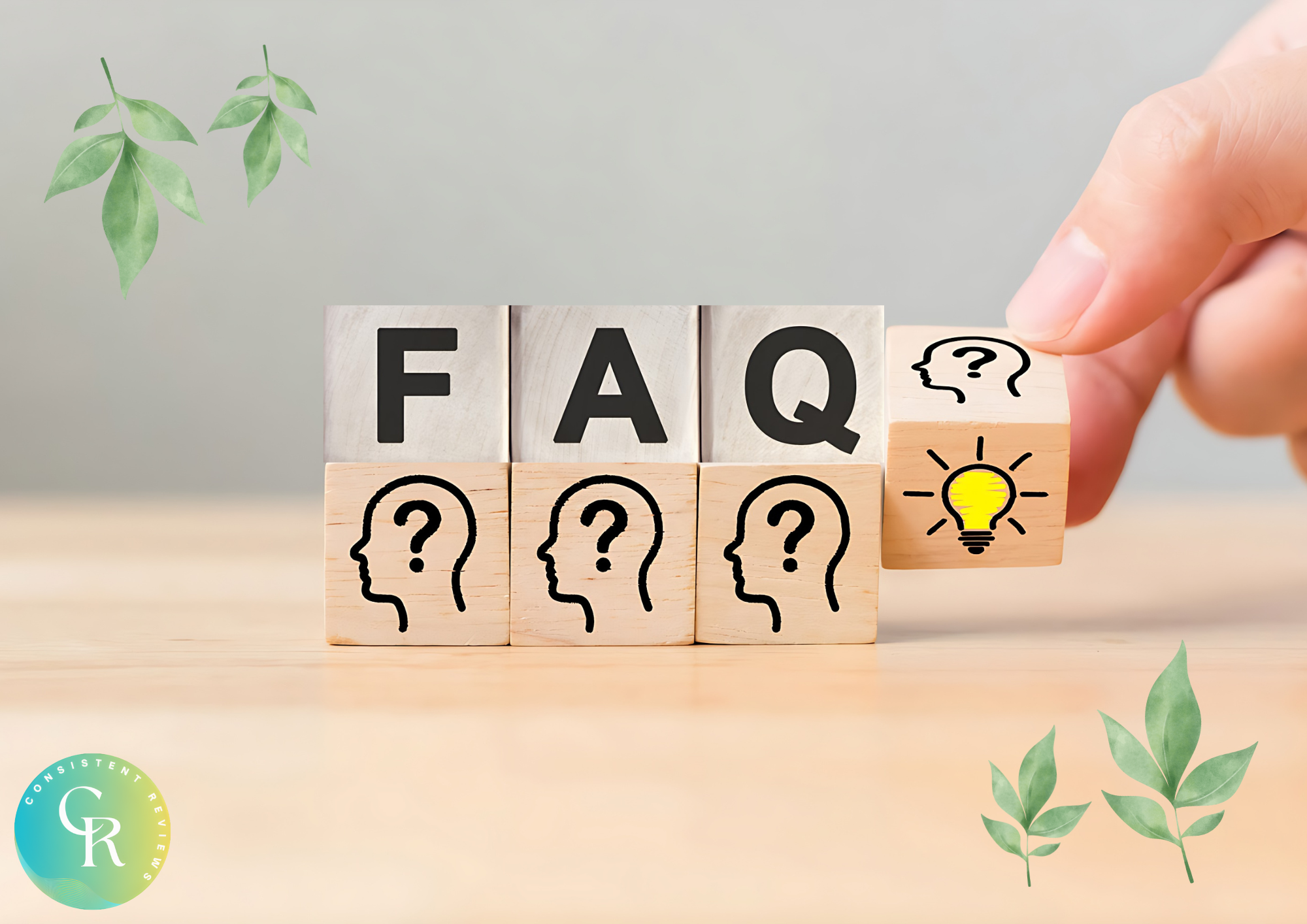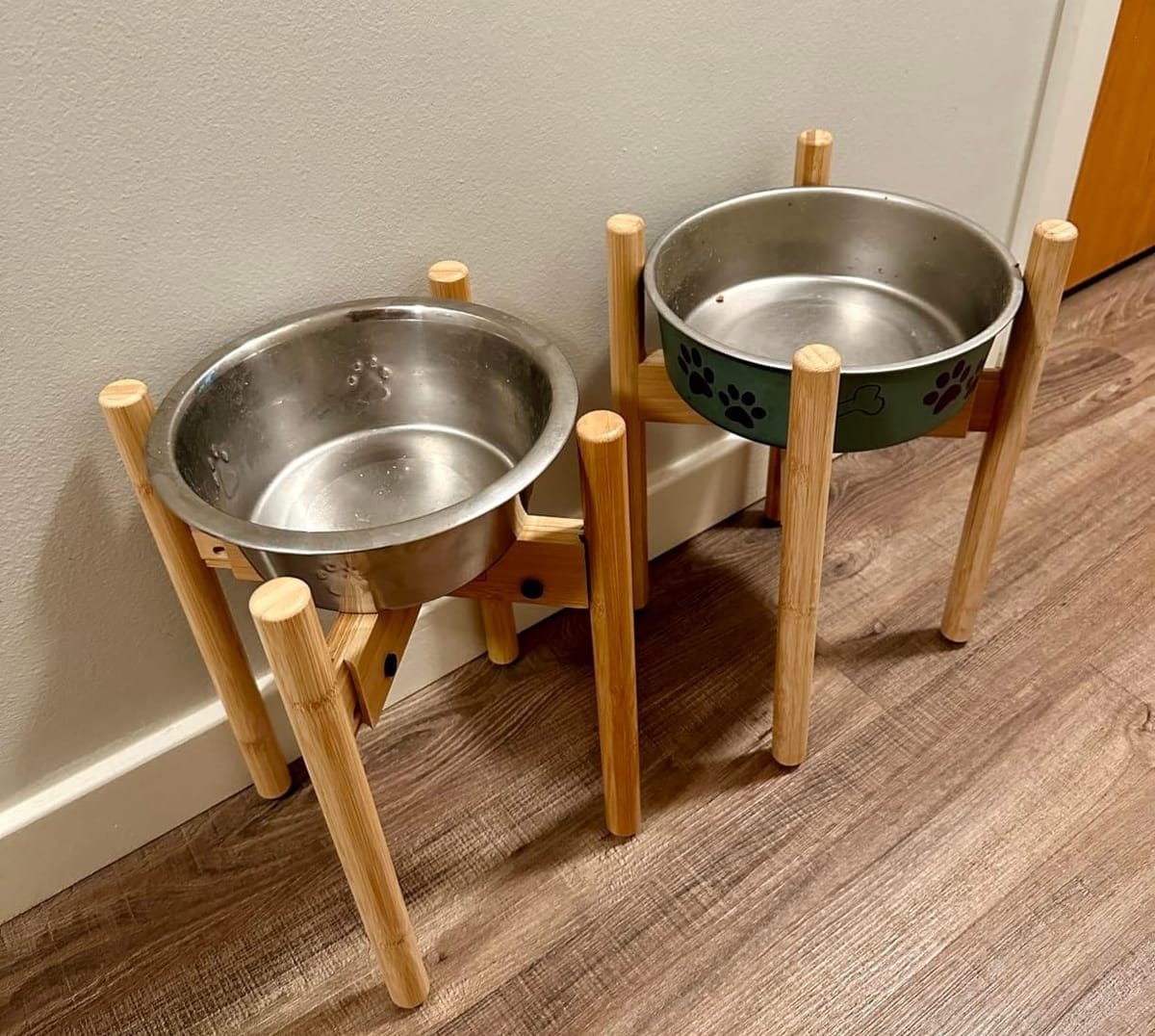Key Takeaways:
- Elevated bowls can offer several benefits, particularly for larger and senior dogs, but they are not suitable for all dogs.
- The choice between elevated and floor-level bowls should be based on the individual dog's health, breed, and feeding habits.
- Consultation with a veterinarian is crucial to determining the best feeding method for your furry friend.
Introduction to Elevated Dog Bowls

When it comes to feeding our furry friends, pet owners often ponder whether elevated dog bowls are the right choice. The debate over whether dogs should eat out of elevated bowls has been ongoing, with opinions varying widely. Elevated feeders, also known as raised dog bowls, have gained popularity due to their potential benefits, especially for larger breeds and senior dogs. However, not all dogs may benefit from this feeding method, and careful consideration is essential.
Elevated dog bowls are designed to raise the food and water bowls off the ground, allowing dogs to eat and drink at a more comfortable height. Using a dog bowl stand can improve posture and comfort for dogs while they eat, helping to alleviate potential neck and back strain. This setup can be particularly beneficial for dogs with neck pain, joint issues, or mobility problems. However, the decision to use elevated feeders should be based on the individual dog’s needs, size, and breed. Understanding the pros and cons of elevated dog bowls can help pet owners make informed decisions about their dog’s feeding habits.
Benefits of Elevated Dog Bowls
One of the primary advantages of elevated dog bowls is improved posture during meal times. When a dog eats from a raised food bowl, it can maintain a more natural stance, reducing strain on the neck and joints. It is important to select a sturdy elevated dog bowl design that prevents tipping and ensures the bowl height is suitable for the dog's size. This is particularly beneficial for larger dogs and senior dogs who may experience discomfort when bending down to eat from floor-level bowls. By providing a more comfortable eating position, elevated feeders can help alleviate joint pain and promote better digestion.
Another benefit of elevated dog bowls is the potential to prevent bloat, a life-threatening condition that can affect certain breeds, especially giant breed dogs. Bloat occurs when a dog’s stomach fills with gas and twists, leading to severe health problems. While the American Veterinary Medical Association has not definitively linked elevated bowls to preventing bloat, some studies suggest that raised feeding bowls may reduce the risk in susceptible dogs. However, it’s crucial to consult with a veterinarian to determine the best feeding method for your dog’s health.
Drawbacks of Elevated Dog Bowls
Despite the potential benefits, elevated dog bowls are not suitable for all dogs. In some cases, raised bowls may increase the risk of developing bloat, particularly in certain breeds. Research has shown that the use of elevated feeders can be associated with an increased risk of bloat in large breeds. Therefore, pet owners should exercise caution and seek veterinary advice before switching to elevated bowls, especially for dogs prone to this condition.
Additionally, elevated dog bowls may not be ideal for messy eaters. Dogs that tend to spill food and water may create more mess with raised bowls, as the elevated position can lead to spills and splashes. For these dogs, traditional bowls at ground level may be a better option to minimize mess and maintain a clean feeding area. It's essential to consider your dog's feeding habits and behavior when deciding on the type of elevated bowl to use.
Choosing the Right Material for Dog Bowls



When selecting elevated dog bowls, the material of the bowls is an important consideration. Stainless steel bowls are a popular choice due to their durability, ease of cleaning, and resistance to bacteria. They are also less likely to retain odors compared to plastic or ceramic bowls. For pet owners seeking a long-lasting and hygienic option, stainless steel bowls are an excellent choice for both food and water bowls.
Ceramic bowls, on the other hand, offer a more aesthetic appeal and can be a good option for dogs that are not prone to chewing or knocking over their bowls. However, ceramic bowls can be more fragile and may chip or crack over time. It's important to regularly inspect ceramic bowls for any damage to prevent potential health risks to your dog. Ultimately, the choice of material should be based on your dog's needs and your personal preferences.
Considerations for Larger and Giant Breed Dogs
Larger dogs and giant breed dogs often benefit from elevated feeders due to their size and unique health considerations. These dogs may experience neck pain and joint strain when eating from floor-level dishes, making raised feeding bowls a more comfortable option. Elevated dog feeders can alleviate discomfort for large breeds that strain to eat from ground-level bowls, while also addressing the controversy surrounding their association with health issues such as bloat. By elevating the bowls, pet owners can help their larger dogs maintain a healthier posture during meal times, reducing the risk of joint pain and discomfort.
However, it’s important to note that not all larger breeds will benefit from elevated bowls. Some studies suggest that raised feeders may increase the risk of bloat in certain large breeds. Therefore, it’s crucial to consult with a veterinarian to determine the best feeding method for your dog’s breed and health status. A tailored approach based on the individual dog’s needs is essential to ensuring their well-being.
Elevated Bowls for Senior Dogs
Senior dogs often face mobility issues and joint pain, making elevated dog bowls a practical choice for their feeding needs. As dogs age, bending down to eat from floor-level bowls can become challenging and uncomfortable. Elevated feeders provide a more accessible and comfortable eating position, allowing older dogs to enjoy their meals without strain.
In addition to improving comfort, raised dog feeders can also promote better digestion in senior dogs. By allowing dogs to eat in a more natural stance, elevated bowls can help prevent digestive issues and enhance overall well-being. Pet owners should consider their senior dog's health and mobility when deciding on the type of feeding bowl to use, ensuring that their furry friend can enjoy meal times comfortably.
Impact on Feeding Habits
The choice between elevated and floor-level bowls can significantly impact a dog's feeding habits. Dogs that eat from elevated bowls may experience a change in their eating speed and posture, which can influence digestion and overall health. For some dogs, raised bowls can encourage slower eating, reducing the risk of choking and promoting better digestion.
However, not all dogs will adapt well to elevated feeders. Some dogs may prefer the traditional bowl setup and may resist changes to their feeding routine. Pet owners need to observe their dog's behavior and preferences when introducing elevated bowls. Gradual transitions and monitoring can help ensure a smooth adjustment to the new feeding method.
Veterinary Recommendations
Consulting with a veterinarian is crucial when deciding whether to use elevated dog bowls. Veterinarians can provide valuable insights into the potential benefits and risks associated with raised bowl taking into account the individual dog's health, breed, and size. They can also offer guidance on the appropriate height for elevated bowls, ensuring that the setup is comfortable and safe for the dog.
Veterinary medicine emphasizes the importance of personalized care for each dog, as not all dogs will benefit from the same feeding method. By working closely with a veterinarian, pet owners can make informed decisions that prioritize their dog's health and well-being. Regular check-ups and discussions with a veterinarian can help address any concerns and ensure that the chosen feeding method aligns with the dog's needs.
Practical Tips for Using Elevated Dog Bowls
For pet owners considering elevated dog bowls, there are several practical tips to ensure a successful transition. First, it’s important to choose the right height for the elevated feeder. The bowls should be positioned at a height that allows the dog to eat comfortably without straining its neck or back. A raised dog bowl can improve a dog's posture and comfort while eating, helping to prevent neck and back strain, especially for dogs with mobility issues or arthritis. Measuring the dog’s height and consulting with a veterinarian can help determine the optimal height for the bowls.
Additionally, pet owners should monitor their dog’s behavior and health after switching to elevated bowls. Observing changes in eating habits, digestion, and overall well-being can provide valuable insights into whether the raised feeders are beneficial. Regular cleaning and maintenance of the bowls are also essential to ensure hygiene and prevent any potential health issues. elevated dog bowls good.


Are elevated dog bowls suitable for all dogs?
No, elevated dog bowls are not suitable for all dogs. While they can offer benefits for larger and senior dogs, they may increase the risk of bloat in certain breeds. It's important to consult with a veterinarian to determine the best feeding method for your dog's specific needs.
What materials are best for elevated dog bowls?
Stainless steel bowls are a popular choice for elevated dog bowls due to their durability and ease of cleaning. Ceramic bowls can also be used but require regular inspection for damage. The choice of material should be based on your dog's needs and your personal preferences.
How can I determine the right height for elevated dog bowls?
The right height for elevated dog bowls should allow your dog to eat comfortably without straining its neck or back. Measuring your dog's height and consulting with a veterinarian can help determine the optimal height for the bowls.

Elevated dog bowls can offer several benefits, particularly for larger and senior dogs, but they are not suitable for all dogs. The choice between elevated and floor-level bowls should be based on the individual dog's health, breed, and feeding habits. Consultation with a veterinarian is crucial to determine the best feeding method for your furry friend. By considering the unique needs of each dog, pet owners can make informed decisions that promote their dog's health and well-being.











